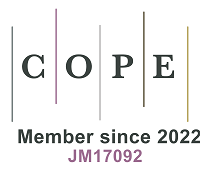REFERENCES
1. USEPA. Basic information about pesticide ingredients. 2024. Available from: https://www.epa.gov/ingredients-used-pesticide-products/basic-information-about-pesticide-ingredients. [Last accessed on 6 Jan 2025].
2. Tesi, G. O.; Okpara, K. E.; Tesi, J. N.; Agbozu, I. E.; Techato, K. Human exposure to endocrine-disrupting organochlorine and organophosphate pesticides in locally produced and imported honey in Nigeria. Int. J. Environ. Health. Res. 2024, 1-21.
3. Camacho-Pérez, M. R.; Covantes-Rosales, C. E.; Toledo-Ibarra, G. A.; et al. Organophosphorus pesticides as modulating substances of inflammation through the cholinergic pathway. Int. J. Mol. Sci. 2022, 23, 4523.
4. Ore, O. T.; Adeola, A. O.; Bayode, A. A.; Adedipe, D. T.; Nomngongo, P. N. Organophosphate pesticide residues in environmental and biological matrices: occurrence, distribution and potential remedial approaches. Environ. Chem. Ecotoxicol. 2023, 5, 9-23.
5. Wei, G.; Wang, C.; Niu, W.; et al. Occurrence and risk assessment of currently used organophosphate pesticides in overlying water and surface sediments in Guangzhou urban waterways, China. Environ. Sci. Pollut. Res. Int. 2021, 28, 48194-206.
6. Mdeni, N. L.; Adeniji, A. O.; Okoh, A. I.; Okoh, O. O. Analytical evaluation of carbamate and organophosphate pesticides in human and environmental matrices: a review. Molecules 2022, 27, 618.
7. Ansari, M. K. A.; Iqbal, M.; Chaachouay, N.; Ansari, A. A.; Owens, G. The concept and status of medicinal and aromatic plants. In: Plants as medicine and aromatics. Boca Raton: CRC Press; 2023. pp. 129-44.
8. Chaachouay, N.; Azeroual, A.; Ansari, M. K. A.; Zidane, L. Use of plants as medicines and aromatics by indigenous communities of Morocco. In: Plants as medicine and aromatics. Boca Raton: CRC Press; 2023. pp. 33-44.
9. Chaachouay, N.; Zidane, L. Plant-derived natural products: a source for drug discovery and development. Drugs. Drug. Candidates. 2024, 3, 184-207.
10. Opuni, K. F. M.; Kretchy, J. P.; Agyabeng, K.; et al. Contamination of herbal medicinal products in low-and-middle-income countries: a systematic review. Heliyon 2023, 9, e19370.
11. Eruaga, M. A.; Itua, E. O.; Bature, J. T. Exploring herbal medicine regulation in Nigeria: balancing traditional practices with modern standards. GSC. Adv. Res. Rev. 2024, 18, 083-90.
12. Sarkhail, P.; Yunesian, M.; Ahmadkhaniha, R.; Sarkheil, P.; Rastkari, N. Levels of organophosphorus pesticides in medicinal plants commonly consumed in Iran. Daru 2012, 20, 9.
13. Klier, B.; Häfner, E.; Albert, H.; et al. Pesticide residues in herbal drugs: evaluation of a database. J. Appl. Res. Med. Aromat. Plants. 2019, 15, 100223.
14. Mensah, F. A. Pesticide residue and health risk analysis of six commonly used herbal medicinal products in Kumasi, Ghana. Texila. Int. J. Public. Health. 2018, 6, 186-95.
15. Mosaddegh, M. H.; Emami, F.; Asghari, G. Evaluation of residual diazinon and chlorpiryfos in children herbal medicines by headspace-SPME and GC-FID. Iran. J. Pharm. Res. 2014, 13, 541-9.
16. Wei, J. C.; Hu, J.; Cao, J. L.; et al. Sensitive detection of organophosphorus pesticides in medicinal plants using ultrasound-assisted dispersive liquid-liquid microextraction combined with sweeping micellar electrokinetic chromatography. J. Agric. Food. Chem. 2016, 64, 932-40.
17. Ajoke, O. R. Health risk assessment of organochlorine pesticide residues in selected herbal medicines sold in Lagos State, Nigeria. Asian. J. Biochem. Genet. Mol. Biol. 2024, 16, 42-54.
18. Tesi, G. O.; Felagha, I.; Ogbuta, A. A.; et al. Levels of endocrine disrupting organochlorine pesticides in herbal medicines from Bayelsa State, Nigeria: any threat to public health? Toxicol. Environ. Health. Sci. 2024, 16, 595-606.
19. Odionkhere, K. T.; Efe, S. I. Climate change vulnerability on the inhabitants of Yenagoa, Bayelsa State. J. Manag. Soc. Sci. Res. 2020, 1, 54-65.
20. Oladimeji, O. E.; Ohwo, O. Assessment of flood risk and mapping of flood risk zones in Yenagoa, Bayelsa State, Nigeria. J. Appl. Sci. Environ. Manag. 2022, 26, 219-26.
21. Pan, L.; Sun, J.; Li, Z.; Zhan, Y.; Xu, S.; Zhu, L. Organophosphate pesticide in agricultural soils from the Yangtze River Delta of China: concentration, distribution, and risk assessment. Environ. Sci. Pollut. Res. Int. 2018, 25, 4-11.
22. European Commission. Guidance document on pesticide analytical methods for risk assessment and post-approval control and monitoring purposes. SANTE/2020/12830. Available from: https://food.ec.europa.eu/system/files/2021-03/pesticides_ppp_app-proc_guide_res_mrl-guidelines-2020-12830.pdf. [Last accessed on 6 Jan 2025].
23. European Commission. Analytical quality control and method validation for pesticide residues analysis in food and feed. SANTE/12682/2019. Available from: https://www.eurl-pesticides.eu/userfiles/file/eurlall/aqcguidance_sante_2019_12682.pdf. [Last accessed on 6 Jan 2025].
24. Olusola, J. A.; Akintan, O. B.; Erhenhi, H. A.; Osanyinlusi, O. O. Heavy metals and health risks associated with consumption of herbal plants sold in a major urban market in Southwest, Nigeria. J. Health. Pollut. 2021, 11, 210915.
25. USDOE (United States Department of Energy). The risk assessment information system. Available from: https://rais.ornl.gov/documents/RAIS_ORNL_6942.pdf. [Last accessed on 6 Jan 2025].
26. Ben, M. S.; Nyanzi, S. A.; Kwetegyeka, J.; et al. Organochlorine pesticide residues in Uganda’s honey as a bioindicator of environmental contamination and reproductive health implications to consumers. Ecotoxicol. Environ. Saf. 2021, 214, 112094.
27. USEPA. Regional screening levels (RSL) summary tables. 2022. Available from: https://www.hawaiipublicschools.org/DOE%20Forms/HIDOE-Soil-Sampling-LahainaSchools-Lab-Results.pdf. [Last accessed on 6 Jan 2025].
29. Farag, R. S.; Abdel, L. M. S.; Abd, E. G. A. E.; Dogheim, S. M. Monitoring of pesticide residues in some Egyptian herbs, fruits and vegetables. Int. Food. Res. J. 2011, 18, 659-65. Available from: http://www.ifrj.upm.edu.my/18%20(02)%202011/(27)%20IFRJ. [Last accessed on 6 Jan 2025]
30. Reinholds, I.; Pugajeva, I.; Bavrins, K.; Kuckovska, G.; Bartkevics, V. Mycotoxins, pesticides and toxic metals in commercial spices and herbs. Food. Addit. Contam. Part. B. Surveill. 2017, 10, 5-14.
31. Siméon, F. M.; Coralie, A.; Clara, L.; Johann, H.; Sylvain, K. Pesticide residues in botanics used in feed additives: focusing on wild vs. cultivable plants. In sed in feed additives: Focusing on wild vs. cultivable plants. Int. J. Environ. Pollut. Remed. 2019, 7, 36-44.
32. Di, B. G.; Potortì, A. G.; Ben, T. A.; et al. Organic contamination of Italian and Tunisian culinary herbs and spices. J. Environ. Sci. Health. B. 2019, 54, 345-56.
33. Tong, H.; Tong, Y.; Xue, J.; Liu, D.; Wu, X. Multi-residual pesticide monitoring in commercial Chinese herbal medicines by gas chromatography–triple quadrupole tandem mass spectrometry. Food. Anal. Methods. 2014, 7, 135-45.
34. Chen, L.; Song, F.; Liu, Z.; Zheng, Z.; Xing, J.; Liu, S. Multi-residue method for fast determination of pesticide residues in plants used in traditional chinese medicine by ultra-high-performance liquid chromatography coupled to tandem mass spectrometry. J. Chromatogr. A. 2012, 1225, 132-40.
35. Du, G.; Song, Y.; Wang, Y. Rapid simultaneous determination of multiple pesticide residues in traditional Chinese medicines using programmed temperature vaporizer injection-fast gas chromatography coupled with mass spectrometry. J. Sep. Sci. 2011, 34, 3372-82.
36. Harris, E. S.; Cao, S.; Littlefield, B. A.; et al. Heavy metal and pesticide content in commonly prescribed individual raw Chinese Herbal Medicines. Sci. Total. Environ. 2011, 409, 4297-305.







